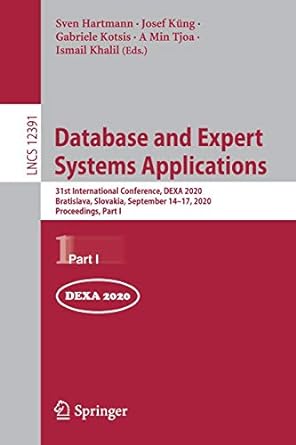Answered step by step
Verified Expert Solution
Question
1 Approved Answer
For questions requiring R code, provide screenshots of both the input ( code ) and the resulting output. Alternatively, directly copy and paste the R
For questions requiring R code, provide screenshots of both the input code and the resulting output. Alternatively, directly copy and paste the R code along with its output from the Console after executing the code. The following questions are based on the Carseats dataset in R which comprises sales data for childrens car seats. This dataset is available in the ISLR package. Load the ISLR package, import the Carseats dataset and assign it to the variable data carseats. Run the data carseats dataset summary and get the descriptive statistics for each variable in the dataset. Based on the summary output in question One of the eleven variables of the data carseats is ShelveLoc, which represents the quality of the shelving location for car seats at each store. What is the class of the variable ShelveLoc? How many stores have Bad shelf locations and how many stores have Medium shelf locations? Write R code to count the frequency of each unique value in the ShelveLoc variable and display it in a table format. Write R code to retrieve the counts for Good and Bad in the ShelveLoc variable and save them in variables good count and bad count. Plot a bar graph of ShelveLoc to show the distribution of shelf locations ShelveLoc in the data carseats and provide labels. Interpret the bar graph in question Apply the lm function in R to fit a multiple regression model to predict Sales using Price, Urban and US Assign results to the variable carseats lm fit. Apply the summary function to provide a summary of the multiple regression model stored in carseats lm fit. Provide an interpretation of each coefficient in the carseats lm fit regression model. Write out the model in equation form specifying values to two places after the decimal point. Hint: Be careful to handle the factor variables. For which of the predictors; can you reject the null hypothesis H : j On the basis of your response to the previous question, use R to fit a smaller model that only uses the predictors for which there is evidence of association with the outcome. How well do the models in and fit the data? Calculate confidence intervals for the coefficients derived from the model described in question and interpret the output. Does the model from show indications of high leverage observations or outliers?
For questions requiring R code, provide screenshots of both the input code and
the resulting output. Alternatively, directly copy and paste the R code along
with its output from the Console after executing the code.
The following questions are based on the Carseats dataset in R which comprises sales data
for childrens car seats. This dataset is available in the ISLR package.
Load the ISLR package, import the Carseats dataset and assign it to the variable
data carseats.
Run the data carseats dataset summary and get the descriptive statistics for each
variable in the dataset.
Based on the summary output in question One of the eleven variables of the
data carseats is ShelveLoc, which represents the quality of the shelving location for
car seats at each store.
What is the class of the variable ShelveLoc?
How many stores have Bad shelf locations and how many stores have Medium shelf
locations?
Write R code to count the frequency of each unique value in the ShelveLoc
variable and display it in a table format.
Write R code to retrieve the counts for Good and Bad in the ShelveLoc variable
and save them in variables good count and bad count.
Plot a bar graph of ShelveLoc to show the distribution of shelf locations ShelveLoc
in the data carseats and provide labels.
Interpret the bar graph in question
Apply the lm function in R to fit a multiple regression model to predict Sales using
Price, Urban and US Assign results to the variable carseats lm fit.
Apply the summary function to provide a summary of the multiple regression model
stored in carseats lm fit.
Provide an interpretation of each coefficient in the carseats lm fit regression model.
Write out the model in equation form specifying values to two places after the decimal
point. Hint: Be careful to handle the factor variables.
For which of the predictors; can you reject the null hypothesis H : j
On the basis of your response to the previous question, use R to fit a smaller model that
only uses the predictors for which there is evidence of association with the outcome.
How well do the models in and fit the data?
Calculate confidence intervals for the coefficients derived from the model described
in question and interpret the output.
Does the model from show indications of high leverage observations or outliers?
Step by Step Solution
There are 3 Steps involved in it
Step: 1

Get Instant Access to Expert-Tailored Solutions
See step-by-step solutions with expert insights and AI powered tools for academic success
Step: 2

Step: 3

Ace Your Homework with AI
Get the answers you need in no time with our AI-driven, step-by-step assistance
Get Started


